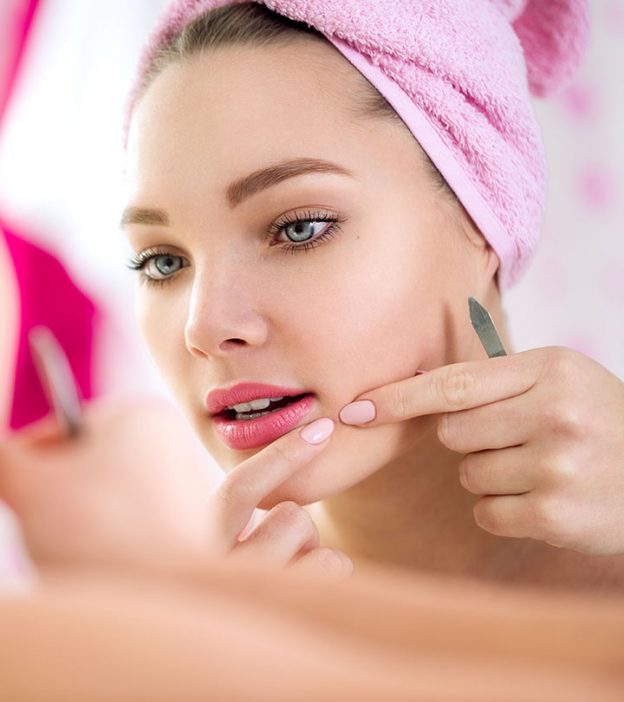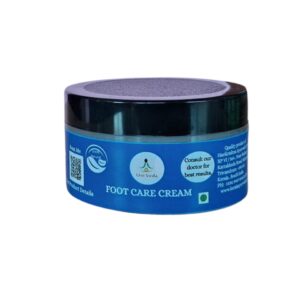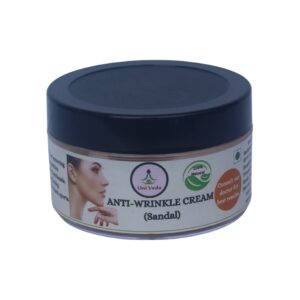OVERVIEW
Introduction to Turmeric Cream:
Turmeric cream is a skincare product that harnesses the potent properties of turmeric, a vibrant yellow spice derived from the Curcuma longa plant. Renowned for its historical use in traditional medicine and culinary practices, turmeric has gained popularity in skincare due to its potential benefits for the skin. Turmeric cream typically contains an extract or derivative of turmeric, such as curcumin, which is its active compound. Here’s a closer look at what turmeric cream entails:
Turmeric Extract: The star ingredient in turmeric cream, turmeric extract contains curcumin, which possesses anti-inflammatory, antioxidant, and skin-brightening properties. These attributes can contribute to a more radiant and healthier-looking complexion.
Anti-Inflammatory Benefits: Curcumin, found in turmeric, is well-known for its anti-inflammatory effects. It can help calm redness, soothe irritations, and alleviate conditions like acne and rosacea.
Antioxidant Power: Turmeric is rich in antioxidants that help neutralize free radicals, which contribute to premature aging and skin damage. By using turmeric cream, you’re providing your skin with an extra line of defense against environmental stressors.
Brightening Effect: The natural pigments in turmeric can help brighten the skin and even out its tone. Over time, turmeric cream may contribute to a more luminous and vibrant complexion.
Potential for Acne and Blemish Control: Turmeric’s antibacterial properties might make turmeric cream a suitable option for those dealing with acne or blemishes. It can help keep pores clean and minimize breakouts.
Moisturizing and Nourishing: Many turmeric creams are formulated with additional moisturizing ingredients that keep the skin hydrated and supple. These creams often strike a balance between the potency of turmeric and the need for skin nourishment.
Caution and Considerations: While turmeric offers numerous benefits, it’s important to note that it can stain skin and clothing due to its vibrant color. Individuals with sensitive skin may experience irritation from curcumin. Doing a patch test before applying turmeric cream to a larger area is advisable.
When using turmeric cream, it’s recommended to follow the product’s instructions and incorporate it into your skincare routine in moderation. While the properties of turmeric can be highly beneficial, individual skin types and sensitivities can vary, so paying attention to your skin’s response is key. In the world of skincare, turmeric cream shines as a product that taps into the natural power of this golden spice to potentially enhance the health and appearance of your skin.
BENEFITS
1. Anti-Inflammatory Properties: Turmeric cream contains curcumin, which is known for its powerful anti-inflammatory effects. Applying turmeric cream can help soothe and calm irritated skin, reducing redness and discomfort.
2. Antioxidant Protection: The antioxidants in turmeric, particularly curcumin, combat free radicals that contribute to premature aging and skin damage. Regular use of turmeric cream can help protect your skin from environmental stressors.
3. Brightening and Radiance: Turmeric is renowned for its ability to promote a more radiant complexion. It can help even out skin tone, fade dark spots, and give your skin a healthy glow.
4. Acne and Blemish Control: Turmeric’s antibacterial and anti-inflammatory properties make it a potential ally against acne. Turmeric cream can help control excess oil production, prevent clogged pores, and reduce the appearance of blemishes.
5. Wound Healing: Turmeric has been used for centuries for its wound-healing properties. The application of turmeric cream can aid in the healing process of minor cuts, scratches, or other skin abrasions.
6. Moisturization: Many turmeric creams are formulated with moisturizing ingredients, providing hydration and helping maintain your skin’s natural barrier.
7. Natural Skin Tone Enhancement: Turmeric’s ability to promote an even skin tone and reduce pigmentation irregularities can contribute to a smoother, more uniform complexion.
8. Soothing Sensitivity: For individuals with sensitive or reactive skin, turmeric cream’s anti-inflammatory nature can provide relief from discomfort and sensitivity.
9. Potential Anti-Aging Effects: The antioxidants and anti-inflammatory properties of turmeric can contribute to a reduction in the appearance of fine lines and wrinkles, helping your skin maintain a more youthful look.
10. Promotes Self-Care Rituals: Incorporating turmeric cream into your skincare routine can transform your daily regimen into a moment of self-care. The application process itself can be a gentle massage that soothes the senses and promotes relaxation.
11. Natural Ingredients: Turmeric cream often contains natural ingredients, which can be appealing to those seeking more holistic skincare solutions.
12. Cultural and Historical Significance: Turmeric has been used for centuries in traditional medicine and skincare practices in various cultures, adding a touch of historical significance to its modern use.
Caution: While turmeric cream offers numerous benefits, it’s essential to conduct a patch test before applying it to a larger area of skin, especially if you have sensitive skin. The vibrant color of turmeric can stain clothing and skin temporarily, so be cautious during application.
By harnessing the natural properties of turmeric, turmeric cream presents a range of potential advantages that contribute to healthier, more radiant skin. Remember that individual results may vary, so monitoring your skin’s response is important for a positive experience.
INGREDIENTS
Ingredients of Turmeric Cream:
Turmeric cream typically contains a blend of ingredients that work together to provide effective skincare benefits. Some common ingredients found in turmeric cream include:
Turmeric Extract: Turmeric extract is the key ingredient in turmeric cream, known for its antioxidant, anti-inflammatory, and brightening properties.
Base Cream: The base cream serves as the carrier for other active ingredients and provides hydration and moisturization to the skin.
Vitamin E: Vitamin E is a powerful antioxidant that helps protect the skin from free radicals and supports overall skin health.
Aloe Vera Extract: Aloe vera extract is known for its soothing and moisturizing properties, promoting skin hydration and reducing inflammation.
Fragrance: Fragrance is added to enhance the sensory experience of using turmeric cream.
GUIDE
How to Use Turmeric Cream:
Daytime Application of Turmeric Cream:
Cleanse: Begin your morning skincare routine by cleansing your face to remove any impurities or residue.
Toner: If you use a toner, apply it to your face, avoiding the eye area.
Serum (Optional): If you use a serum, apply it before the turmeric cream. Serums are usually lightweight and can be absorbed quickly.
Turmeric Cream: Take a small amount of turmeric cream using your fingertip. Gently apply it to your face and neck, avoiding direct contact with the eyes. Focus on areas where you want to address concerns like uneven tone, inflammation, or irritation.
Sunscreen: Finish your daytime routine with broad-spectrum sunscreen to protect your skin from UV rays. Turmeric can make your skin more sensitive to the sun, so sunscreen is especially important when using turmeric cream during the day.
Nighttime Application of Turmeric Cream:
Cleanse: Cleanse your face to remove makeup, dirt, and pollutants before applying turmeric cream.
Toner: Apply your toner, if used, after cleansing.
Serum (If Used): If you have a nighttime serum, apply it before the turmeric cream. Nighttime is an ideal time for products that may require more time to be absorbed.
Turmeric Cream: Gently apply a small amount of turmeric cream to your face and neck. Massage it using upward, circular motions. Take care to steer clear of the sensitive skin surrounding your eyes.
Allow Absorption: Give the turmeric cream some time to absorb before going to bed. You may consider lightly massaging the cream into your skin to enhance absorption and relaxation.
Bedtime Routine: Finish your nighttime routine as usual, whether it involves applying an eye cream, lip balm, or any other products you use regularly.
Additional Tips:
** Use a small amount of turmeric cream to avoid over-application. A little goes a long way.
Turmeric’s vibrant color can temporarily stain your skin. Be cautious during application, and consider using it at night if you’re concerned about any residual color.
** If you’re new to using turmeric cream, perform a patch test on a small area of your skin before applying it to your face to ensure your skin tolerates it well.
** Be consistent with your routine. The benefits of turmeric cream may become more noticeable with regular use.
Remember that individual reactions to skincare products can vary, so monitor how your skin responds and adjust your usage accordingly. By incorporating turmeric cream into both your daytime and nighttime routines, you can maximize its potential benefits for your skin.
FAQ (Frequently Asked Questions) about Turmeric Cream:
Q1: Can turmeric cream be used by all skin types?
A1: Yes, turmeric cream is generally suitable for all skin types. However, individuals with specific skin concerns or sensitivities should perform a patch test before extensive use.
Q2: Can turmeric cream stain the skin or clothes?
A2: Turmeric cream is formulated to minimize the risk of staining. However, it is advisable to allow the cream to absorb fully into the skin before coming into contact with fabrics or surfaces.
Q3: Can turmeric cream be used as a spot treatment?
A3: Yes, turmeric cream can be applied as a spot treatment on areas with specific concerns or skin blemishes. Take a modest quantity of the cream and apply it directly to the targeted area, softly massaging it into the skin.
Please consult with a dermatologist or skincare professional for personalized advice and recommendations based on your specific skin concerns and needs.







Reviews
There are no reviews yet.